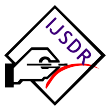Imp Links for Author
Imp Links for Reviewer
Research Area
Subscribe IJSDR
Visitor Counter
Copyright Infringement Claims
Indexing Partner
|
Published Paper Details
|
|
| Paper Title: | THE EFFECTIVENESS OF CONVENTIONAL THERAPY WITH INTRINSIC FOOT MUSCLES EXERCISE VERSUS CONVENTIONAL THERAPY WITH GLUTEAL MUSCLES STRENGHTHENING EXERCISE ON PAIN AND IMPROVING BALANCE AMOUNG PES PLANUS PATIENTS. |
| Authors Name: | KAVITH.K , USHA NANDHINI.M , KALPANA.K , PRIYANKA.N H.M , DEEPAN BABU |
| Unique Id: | IJSDR2310088 |
| Published In: | Volume 8 Issue 10, October-2023 |
| Abstract: | ABSTRACT THE EFFECTIVENESS OF CONVENTIONAL THERAPY WITH INTRINSIC FOOT MUSCLES EXERCISE VERSUS CONVENTIONAL THERAPY WITH GLUTEAL MUSCLES STRENGHTHENING EXERCISE ON PAIN AND IMPROVING BALANCE AMOUNG PES PLANUS PATIENTS. INTRODUCTION AND BACKGROUND: Pesplanus is also called as flat foot, which is the loss of medial longitudinal arch of the foot. A Condition in which the entire sole of the foot touches the floor while standing. Prevalence of flat foot seems to be 28% at certain age groups. Pes planus is more prevalent in children and females. All typically developing infants are born with flexible flat feet, with arch development first seen around 3 years of age and then often only attaining adult values in arch height between 7 and 10 years of age. The etiology of pes planus has several factors implicated and can be either congenital and acquired. Among many interventions for subject with pesplanus, intrinsic foot muscle exercises and gluteal muscles strengthening exercises are claimed to be important interventions. Researchers have demonstrated evidence for the use of exercise in the treatment of pesplanus. However the opinions about efficacy of these exercise regime differ. Hence the purpose of the study is to compare the effectiveness of conventional therapy with intrinsic foot exercise versus conventional therapy with gluteal muscles strengthening exercise for pesplanus to reduce pain and improve balance. AIM: A Comparative study on the effect of conventional therapy with intrinsic foot muscles exercise versus conventional therapy with gluteal muscles strengthening exercise on pain and improving balance among pesplanus patients. METHODOLOGY : Subjects were equally divided into 2 groups with 15 subjects on each group randomly. In Group A, Subjects were treated with conventional therapy with intrinsic foot exercise and Group B, Subjects were treated with conventional therapy with gluteal muscles strengthening exercise. Cryotherapy was given conventionally for both the groups, its helps reduce pain. Interventions were given for 6 weeks for both the group. The outcomes were measured by VAS for pain and Berg Balance scale for balance. RESULT: The data were tabulated and analysed statistically. The result showed that all outcome measurements got improved statistically in group A and B. However, group B showed significant improvement p<0.005 compared to group A. The conventional therapy with gluteal muscles strengthening group B showed significant result compare to other group. CONCLUSION: There is significant improvement in balance and pain reduction in 6 weeks. The alignment, strength and stability of hip has got a influence on foot alignment and its biomechanical activities, which is mediated by some reflexes on foot. This could be a reason for conventional therapy with gluteal muscle strengthening is more effective in reducing pain and improving balance. Moreover, the weakness of gluteal muscles can result in rotation of hip joint internally this could in turn result in foot pronation and become the cause for pesplanus. Hence, by strengthening gluteal muscles, the hip can be stabilized. This counteracts gravity`s hip adduction torque and maintain proper leg alignment controlling adduction and internal rotation of the thigh and externally rotates the alignment of the lower extremity and help reducing foot pronation. However, intrinsic foot exercises also seem to provide dynamic foot support, helping to control the speed and amount of pronation and stabilize the arches further locally. |
| Keywords: | Intrinsic foot exercise, gluteal muscles strengthening exercise, pesplanus, VAS, berg balance scale. |
| Cite Article: | "THE EFFECTIVENESS OF CONVENTIONAL THERAPY WITH INTRINSIC FOOT MUSCLES EXERCISE VERSUS CONVENTIONAL THERAPY WITH GLUTEAL MUSCLES STRENGHTHENING EXERCISE ON PAIN AND IMPROVING BALANCE AMOUNG PES PLANUS PATIENTS.", International Journal of Science & Engineering Development Research (www.ijsdr.org), ISSN:2455-2631, Vol.8, Issue 10, page no.527 - 538, October-2023, Available :http://www.ijsdr.org/papers/IJSDR2310088.pdf |
| Downloads: | 000338719 |
| Publication Details: | Published Paper ID: IJSDR2310088 Registration ID:208972 Published In: Volume 8 Issue 10, October-2023 DOI (Digital Object Identifier): Page No: 527 - 538 Publisher: IJSDR | www.ijsdr.org ISSN Number: 2455-2631 |
|
Click Here to Download This Article |
|
| Article Preview | |
|
|
|
Major Indexing from www.ijsdr.org
| Google Scholar | ResearcherID Thomson Reuters | Mendeley : reference manager | Academia.edu |
| arXiv.org : cornell university library | Research Gate | CiteSeerX | DOAJ : Directory of Open Access Journals |
| DRJI | Index Copernicus International | Scribd | DocStoc |
Track Paper
Important Links
Conference Proposal
ISSN
 |
 |
DOI (A digital object identifier)
  Providing A digital object identifier by DOI How to GET DOI and Hard Copy Related |
Open Access License Policy
Social Media
Indexing Partner |
|||
| Copyright © 2024 - All Rights Reserved - IJSDR | |||






Facebook Twitter Instagram LinkedIn